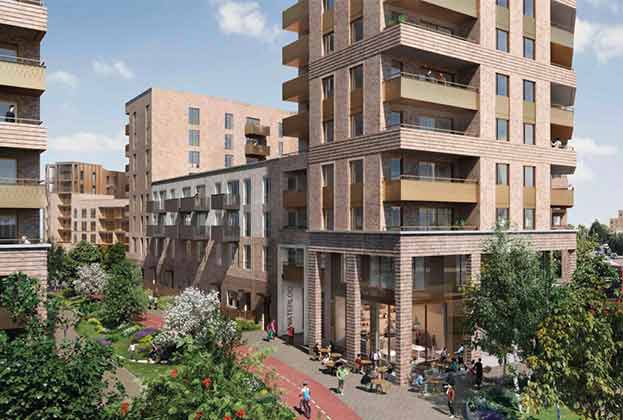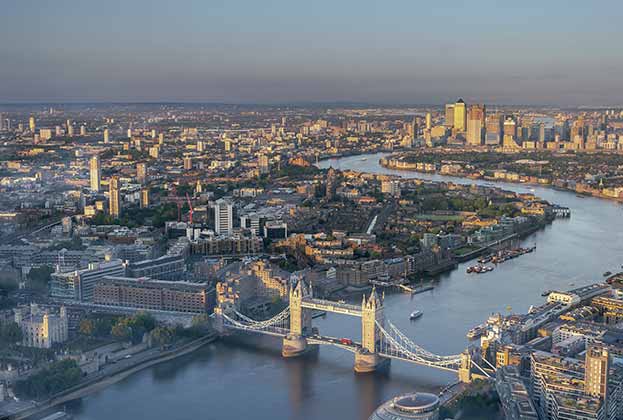Investment into the East London Corridor sets it up for future value growth growth
The combination of its unique affordability and current undersupply presents a significant opportunity for development and regeneration to unlock future value growth in the East London Corridor whilst delivering the housing that is desperately needed. People will be spending more time than ever working from, or close to, home and so will be spending much more time in their local communities. This means that the quality of local amenities and public realm will play an even more pivotal role in potential buyers deciding where to move.
The East London Corridor has seen significant investment that will not only create jobs and economic output, but enhance the local area and further consolidate it as a part of London that people want to live. It is forecast to see higher employment and GVA growth than the rest of London between 2019 and 2029, with employment due to grow by 9% and GVA by 19%, according to Oxford Economics.
Creative and digital industries
Creative industries and the digital sector grew by 8% and 6% per year in London between 2010 and 2018. With the East London Tech City in Hackney, the East London Corridor is at the centre of creative digital business within London. Further investment is planned within this sector, with investment shifting further eastwards.
East Bank, located across three sites at Queen Elizabeth Olympic Park in Newham, is representative of this increased investment in the East and is forecast to create more than 2,500 jobs and add an estimated £1.5 billion to the local economy. Plans include the relocation of cultural institutions such as the BBC music studios alongside the creation of Sadler’s Wells East and V&A East. Two universities, UAL’s London College of Fashion and UCL, are also creating campuses at East Bank. The involvement of universities will allow pioneering work to be created which is at the forefront of creative innovation.
HereEast is another innovation and technology campus at the Olympic Park that will drive forward digital innovation and the area’s sporting legacy. BT Sport, Sports Interactive and FiiT are among the tenants at the campus, while UCL, Loughborough University and Staffordshire University also have a presence.
The creative and digital industries are being supported by the creation of Dagenham Film Studios. This will be London’s largest new film and television production studio in 25 years and will create an estimated 1,200 jobs
Michael McGill, Research Analyst, Savills Research
The creative and digital industries are being supported by the creation of Dagenham Film Studios. This will be London’s largest new film and television production studio in 25 years and will create an estimated 1,200 jobs. The Fashion District Plan aims to make east London the global hub of fashion technology. This has led to the creation of Poplar Works, which provides both affordable workspace and training programmes in fashion manufacturing.
The home of the Greater London Authority will also be shifting east, to its new headquarters at The Crystal building in the Royal Docks. The Mayor of London believes this will act as a catalyst for the regeneration of Royal Docks, which could create over 60,000 new jobs over the next 20 years.
The new Thames Freeport is also now open for business as it became one of eight new freeports across England. It will connect Ford’s Dagenham engine plant, the global ports at London Gateway and Tilbury to provide over £4.5 billion in new public and private investment and over 25,000 new jobs.
Barking and Dagenham is also set to be the new home of the three historic food markets of Smithfield, Billingsgate and New Spitalfields. The purpose-built site at Dagenham Dock secured resolution to grant outline planning consent in March 2021 and will create one of Europe’s biggest wholesale food market destinations along with generating just under £3 billion across the UK economy each year.
The existing transport network in east London will be improved when Crossrail is completed, with the likes of Ilford and Romford to benefit from improved connectivity and major station upgrades. The overground and c2c network is also set to see further improvements, with an extension to a new station at Barking Riverside and an additional new station at Beam Park respectively.
We have highlighted five areas in the East London Corridor that currently see low median £psf values and that have seen notable investment into improving the local amenities and public realm and upcoming improvements to infrastructure. The ability for these growth areas to ‘place-make’ offers the potential to see further value uplift.
Top five hotspots for development
1. Ilford town centre
.jpg)
Ilford has capacity for 6,000 new homes according to the new London Plan. A cultural quarter including a new library, theatre, leisure centre, restaurants and outdoor seating, as well improved streetscaping are all part of the regeneration, which will make it a more attractive place for people to visit, in addition to those who live there. Consideration of meanwhile uses in the town centre, such as SPACE opening 35 studios for artists in the Town Hall adds to the sense of community and place.
2. Barking town centre
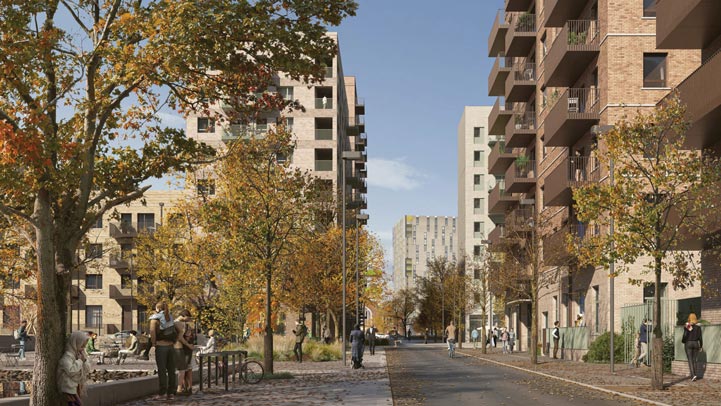
The redevelopment of Barking town centre epitomises the concept of the 15-minute city, aiming to create a high quality of life for locals by ensuring all essential amenities are within a 15-minute walk. Placemaking and sustainability are key objectives of the regeneration. Enhancing green space is therefore an essential part of the redevelopment, with plans to enhance existing spaces such as Abbey Green. Through the development of the Town Quay, the River Roding will also become more accessible for locals.
Gascoigne Estate, being redeveloped by Be First, will see a new 1.25-acre park, green roofs and solar panels, tree planting and community spaces that are central to the concept of a 15-minute city. On the other side of the River Roding, Countryside’s Fresh Wharf will create over 16,000 sq m of open space, as well as newly created pedestrian walkways and cycle paths.
3. Barking riverside
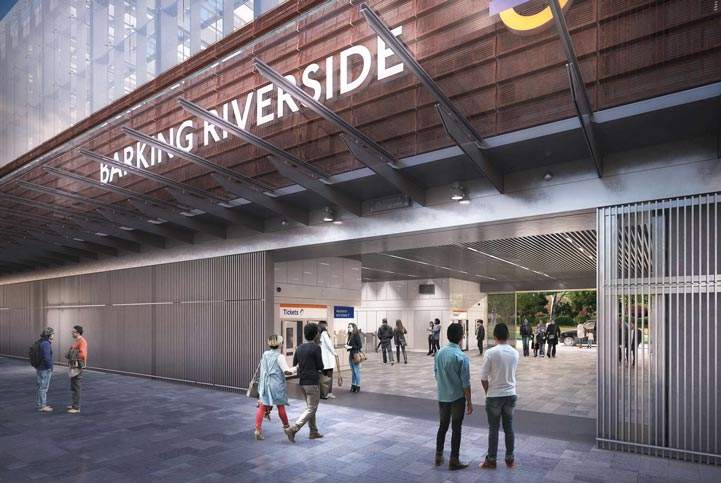
Barking Riverside has plans to include 21 hectares of open space and sports pitches, alongside the delivery of schools and other amenities such as a Health and Leisure Hub. Creating a vibrant community through events and community platforms such as Thames Talk, which will provide a platform for local residents to give feedback and collaborate with other residents, is an essential part of the development.
So far, over 1,500 homes have been built along with new schools and community facilities, and Sadiq Khan has recently signed off on an extra £40 million of funding for further groundworks and infrastructure improvements.
4. Dagenham Dock and Beam Park
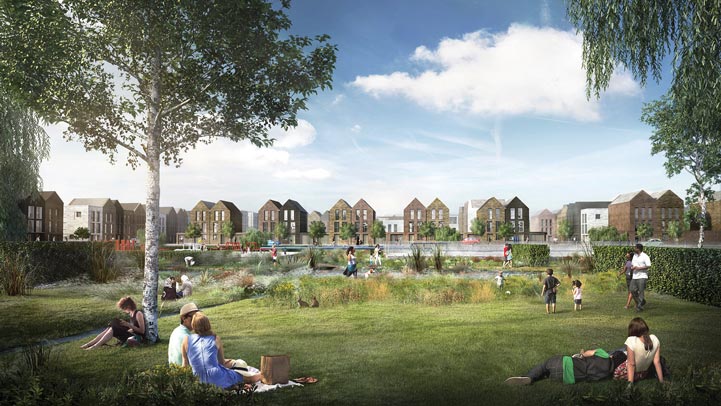
With Billingsgate, New Spitalfields and Smithfield markets moving to the 42-acre site of the former Barking Reach Power station in 2025, Dagenham Dock will be home to the largest wholesale food market in the UK. Ford’s Dagenham engine plant will be part of the new Thames which is part of a project that will create over 25,000 jobs and is forecast to add £5.1 billion additional GVA according to the bid submitted.
The development of the former Dagenham Stamping Plant has been supported by an £80 million grant from the Affordable Housing Programme and will deliver over 3,100 homes. Neighbouring Beam Park, will not only deliver an additional 3,000 homes, but build a new railway station and create a new 2.5-hectare central park.
5. Romford town centre
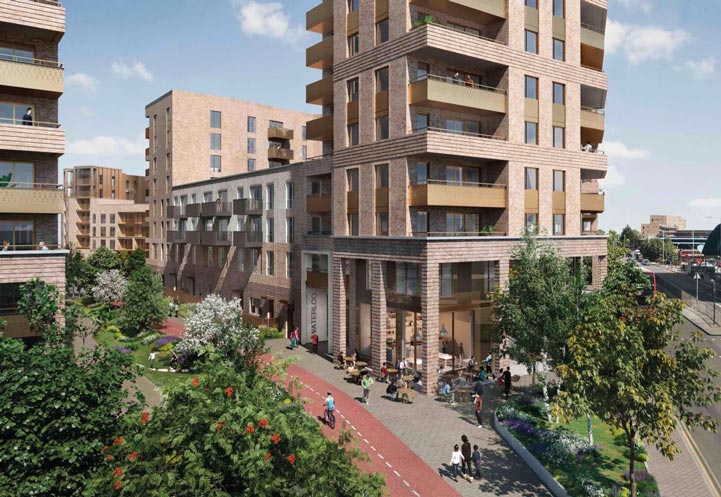
A draft master plan for the town centre includes revamping Market Place and creating complementary activities and events to engage the community. There are plans to improve the public realm by introducing trees and green links to the Town Centre alongside enhancing existing key public realm spaces such as South Street, Victoria Road and the Station entrance. There are also plans to make best use of the River Rom by creating green spaces and eateries on the edge of the river.
Operational Services for Romford’s Crossrail Station are due to start in 2022 with an estimated travel time of 35 minutes to Bond Street. We expect developers to leverage on this infrastructure upgrade in the promotion and sale of units in this future hotspot.
Read the articles within Spotlight: East London Corridor Development below.
.jpg)
